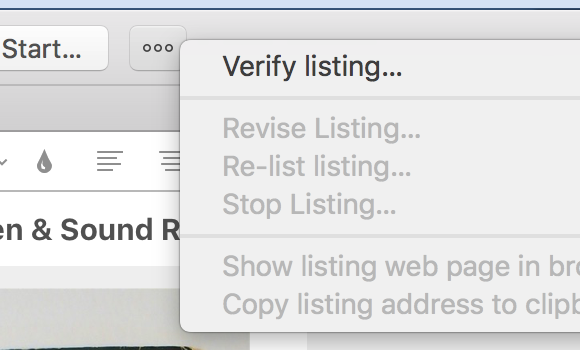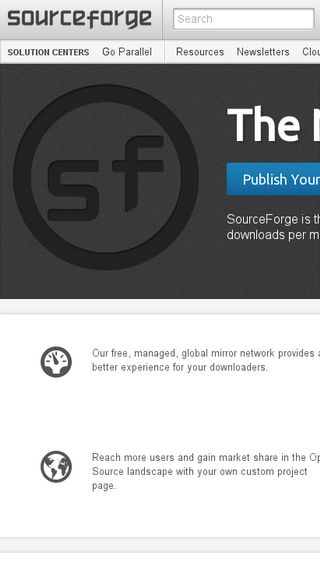Dmg Package Won't Verify
Apple’s system updates have greatly improved over time. And though you’re less likely to face issues (slow downloading speeds, unable to resume download, frequent disconnections, etc.) while downloading macOS Catalina this year, there’s no guarantee that they won’t happen at all.
Many users would still be looking for direct downloads for macOS Catalina, primarily for multi-threaded, faster downloading via download managers & accelerators, resume support for incomplete/interrupted downloads and many more reasons.
Sep 21, 2016 Installer package won't verify Split from this thread. I downloaded Microsoft Office 2016 from my account. After the DL was complete, I clicked on the.pkg and a small window opens, 'Verifying MicrosoftOffice2016Installer.pkg' but nothing happens. The status bar never even begins to load. Jul 31, 2019 Run codesign -deep against the app package; Package DMG; Run codesign again on. So I won't be able to get it in prior to the release. But I will work on this next so we can get rid of this. Plan of action is. Use symlinks. Use symlinks for resource files. Add healthcheck to verify font is present. Fix healthcheck. Fix HealthCheck. Nov 18, 2019 For example, say a DMG file isn't just storing compressed files like images and videos but is instead holding a software program. You can extract/open the DMG file in Windows using one of the programs mentioned below, but you can't actually execute the program and use it like you would another Windows application. Oct 28, 2019 If you manually download an update package for Mac, you can verify the signature to confirm that the package is authentic and complete. To ensure the authenticity of its software updates, Apple digitally signs all updates and offers them exclusively through the App Store or Apple Support Downloads site. Jan 19, 2015 Control Click on the “Install OS X Mountain Lion” app and choose “Show Package Contents” Navigate through Contents Shared Support InstallESD.dmg and double click to start InstallESD.dmg A volume “Mac OS X Install ESD” will appear after verifying. Use that installer inside that Volume. This works also on Lion. Running the spctl tool with spctl -assess -verbose Onivim2.dmg shows: spctl -assess -verbose Onivim2.dmg Onivim2.dmg: rejected (the code is valid but does not seem to be an app) It's not clear to me why we're getting this message - the process we follow is: Run codesign -deep against the app package; Package DMG; Run codesign again on the DMG. Oct 28, 2018 The key is to make sure you have everything installed correctly and your Genie is on the same Wifi Network. You can verify this by launching the VLC app and verifying you can see your Directv2PC Media Server under Local Network Universal Plug'n'Play. From there, it's just a matter of double-checking software setup.
In this article, we’ll explore a way to download macOS Catalina directly from the Apple server instead of via the MAS, using your favorite web browser or a download accelerator.
Note: This post is specific to macOS Catalina direct download from Apple servers. For other macOS and OS X releases, check our earlier articles in this series.
Page Contents
- 1 Download and install macOS Catalina without MAS / System Preferences
Download and install macOS Catalina without MAS / System Preferences
Since macOS Catalina, OS updates are delivered through the Software Update menu in System Preferences. When you try to download macOS updates via MAS, you’re automatically redirected to the Software Update menu.

In macOS, when you click on the Update button, some package files are downloaded to your computer, and then processed by the Software Update utility, to convert them into an executable “.app” file. You cannot install macOS directly from the raw package files.
For this workaround, we’re going to directly download these raw packages from Apple server using a web browser or a suitable download accelerator. Then, we’ll configure the computer in such a way that Software Update processes the package files by fetching them from a local directory on your Mac, instead of downloading it again from the Apple Server.

macOS Catalina Direct Download
Step 1: Download the three “.pkg” files from the respective URLs given below.
macOS Catalina 10.15.3 (19D76) / January 28, 2020 (Updated)
- macOS Catalina InstallESDDmg.pkg file download URL: http://swcdn.apple.com/content/downloads/47/20/061-44387-A_FV9KA9D9EY/g6dlznrbw0mchuh9dvusbzd3ld7prg4h3z/InstallESDDmg.pkg
- macOS Catalina RecoveryHDMetaDmg.pkg file download URL: http://swcdn.apple.com/content/downloads/47/20/061-44387-A_FV9KA9D9EY/g6dlznrbw0mchuh9dvusbzd3ld7prg4h3z/RecoveryHDMetaDmg.pkg
- macOS Catalina InstallAssistantAuto.pkg file download URL: http://swcdn.apple.com/content/downloads/47/20/061-44387-A_FV9KA9D9EY/g6dlznrbw0mchuh9dvusbzd3ld7prg4h3z/InstallAssistantAuto.pkg
Step 2: Configure your Mac so that Software Update looks for the macOS packages locally instead of from the Apple server.
To do this, you need to edit the hosts file on Mac to point the root domain of the download URLs (“swcdn.apple.com”) to localhost (“127.0.0.1”). The below instructions will guide you to modify the hosts file as required.
- Launch Terminal on your Mac from Launchpad or Applications list.
- Type in the following command: “sudo nano /etc/hosts”
- Provide the System Password when prompted. The hosts file is now open in editable mode within the Terminal window.
- Append the following line to the end of the file: “127.0.0.1 swcdn.apple.com”.
- Press control + X (^X), then Y and hit return to save the file and return to Terminal prompt.
From now on, any request issued for the particular root domain (swcdn.apple.com) from the Mac will be directed to localhost.
Note: Sometimes, you might need to flush the DNS cache for the changes to take effect. In that case, use the “sudo killall -HUP mDNSResponder” command to flush DNS cache.
Step 3: Place the package files in a certain relative path from the localhost root, to mimic the structure of their respective download URLs.
Dmg Package Won't Verify List
In this example, we’ll create a folder named “macos_local” on Desktop, and replicate the directory structure of the package URLs under the same. Once the relative path has been created, we’ll configure the localhost server to point to the “macos_local” directory on Desktop. Then, we’ll use macOS’ built-in SimpleHTTP server to convert the folder into a web server directory.
The below instructions will guide you through the setup process.
- Open Terminal from the Launchpad or Applications list.
- Type “cd Desktop” on the command line and hit return to enter the Desktop folder.
- Type “mkdir macos_local” and hit return to create the root directory of the same name on Desktop.
- Go to the newly created folder by typing “cd macos_local” and hitting return.
- Enter the following command to create the relative path for the .pkg files, inside the macos_local folder (Provide the admin password when requested):
“sudo mkdir -p ./content/downloads/47/20/061-44387-A_FV9KA9D9EY/g6dlznrbw0mchuh9dvusbzd3ld7prg4h3z/” - Place the downloaded package files in their respective relative location (as per their URLs) within the macos_local folder on the Desktop. Click on Authenticate when prompted, and provide the system admin password.
- With macos_local as the present working directory in Terminal, execute the following command: “sudo python -m SimpleHTTPServer 80”. Provide the admin password and click on Allow in the subsequent message prompt.
The current directory (macos_local) is now hosted on localhost. Leave the Terminal window open to keep the localhost server running until the process is completed.
To verify the setup, click on any of the package (.pkg or pkg) URLs in your browser and check the download speed as it downloads the package.
You may notice a very high-speed download (which is much higher than the speed of your Internet connection). This is because the file will be downloaded through localhost; your Internet bandwidth won’t be used.
Step 4: Download macOS Catalina through the Mac App Store or System Preferences.
Dmg Package Won't Verify Key
Don’t worry. Since you’ve redirected the package URLs locally, Software Update / MAS will fetch the package files from localhost and launch the installer (“.app”) file once the packages have been processed.
Note: Your Mac might request additional resources from the “swcdn.apple.com” domain while installing macOS Catalina. Thus, it is recommended to remove the entry from the hosts file that we appended earlier, before proceeding with the installation.
Is the workaround genuine?
In this workaround, we are downloading the required resources from the Apple Server and using the official Software Update channel to install the OS update. So yes, it is as genuine as the official method.
The only factor we’re changing here is the location where Software Update / MAS fetches the packages from. If you are downloading the macOS package files from third-party sources, you can verify whether it’s the original, by comparing their MD5 and SHA1 hash values.
macOS Catalina Bootable Installer (macOS Catalina DMG)
Now that you have the “macOS Catalina.app” installer, you can upgrade multiple Macs to the latest version using the same file. However, if you are looking to perform a fresh installation, you need to create a bootable installer for Catalina.
The bootable image for Catalina (InstallESD.dmg) is located within its “.app” file. To get the InstallESD.dmg file, right-click on “macOS Catalina.app”, select “Show Package Contents” option, and browse to the “Contents/SharedSupport/” folder.
Alternatively, the bootable installer for macOS Catalina may be directly created from the “.app” file using the “createinstallmedia” command, as suggested by Apple.
If this workaround has helped you to get macOS Catalina easily or saved your Internet bandwidth on single or multiple installations, let us know in the comments below.

